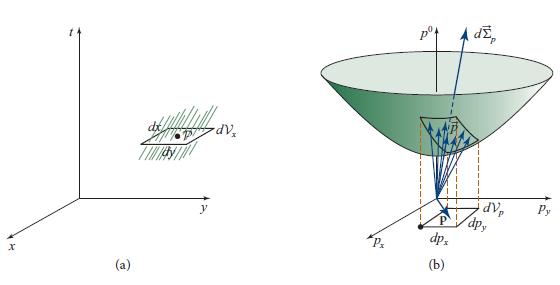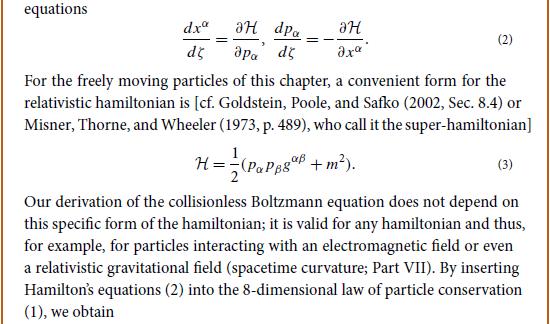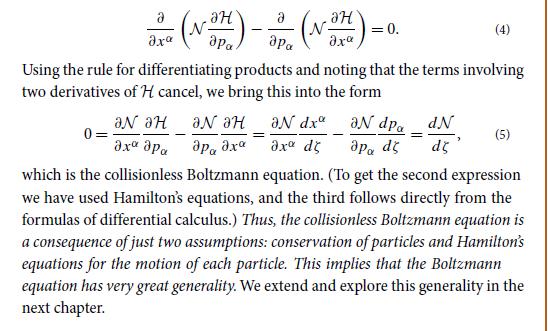A galaxy such as our Milky Way contains 10 12 starseasily enough to permit a kinetic-theory description
Question:
A galaxy such as our Milky Way contains ∼1012 stars—easily enough to permit a kinetic-theory description of their distribution; each star contains so many atoms (∼1056) that the masses of the stars can be regarded as continuously distributed, not discrete. Almost everywhere in a galaxy, the stars move with speeds small compared to light, but deep in the cores of most galaxies there resides a massive black hole near which the stars move with relativistic speeds. In this exercise we explore the foundations for treating such a system: “particles” with continuously distributed rest masses and relativistic speeds.(a) For a subset S of particles like that of Fig. 3.3 and associated discussion, but with a range of rest masses dm centered on some value m, introduce the phase-space volume
![]()
that the particles S occupy. Explain why this occupied volume is frame invariant.(b) Show that this invariant occupied volume can be rewritten as
![]()
Explain the physical meaning of each term in parentheses, and show that each is frame invariant. If the number of particles in the set S is dN, then we define the frame-invariant distribution function by

This is a function of location P in 4-dimensional spacetime and location p(vector) in 4- dimensional momentum space (not confined to the mass hyperboloid), and thus a function of location in 8-dimensional phase space. We explore the evolution of this distribution function in Box 3.2
Fig 3.3




Step by Step Answer:

Modern Classical Physics Optics Fluids Plasmas Elasticity Relativity And Statistical Physics
ISBN: 9780691159027
1st Edition
Authors: Kip S. Thorne, Roger D. Blandford





